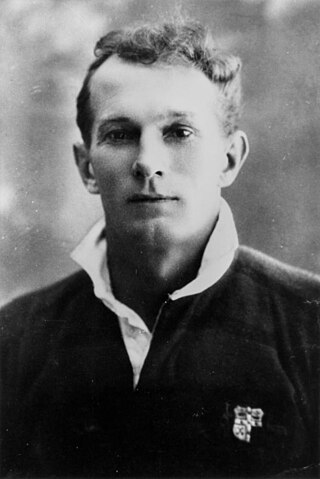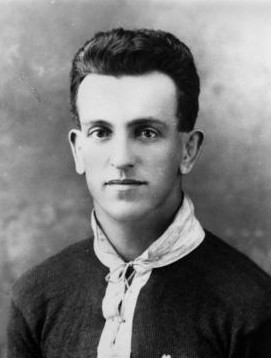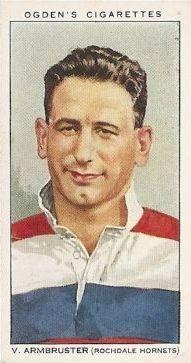
Arthur Henry "Artie" Beetson OAM was an Australian rugby league footballer and coach. He represented Australia, New South Wales and Queensland all between 1964 and 1981. His main position was at prop. Beetson became the first Indigenous Australian to captain Australia in any sport and is frequently cited as the best post-war forward in Australian rugby league history. He also had an extensive coaching career, spanning the 1970s to the 1990s, coaching Australia, Queensland, Eastern Suburbs, Redcliffe Dolphins and the Cronulla-Sutherland Sharks.

Shane Webcke is an Australian former professional rugby league footballer, who spent his entire club career playing for the Brisbane Broncos. Webcke represented Queensland in the State of Origin 21 times and also captained the side. He made 26 test appearances for Australia. His position was prop forward and at his peak he was renowned as the best front rower in the world. Alongside Glenn Lazarus and Arthur Beetson, Webcke is considered by many to have been one of the finest post-war front-rowers to play the game.
Barry Muir was an Australian professional rugby league footballer and coach. An Australian and Queensland representative halfback, he played in 22 Tests between 1959 and 1964, as captain on two occasions.

Clive Bernard Churchill AM was an Australian professional rugby league footballer and coach in the mid-20th century. An Australian international and New South Wales and Queensland interstate representative fullback, he played the majority of his club football with and later coached the South Sydney Rabbitohs. He won five premierships with the club as a player and three more as coach. Retiring as the most capped Australian Kangaroos player ever, Churchill is thus considered one of the game's greatest ever players and the prestigious Clive Churchill Medal for man-of-the-match in the NRL grand final bears his name. Churchill's attacking flair as a player is credited with having changed the role of the fullback.

Brian Davies was a Queensland state and Australian national representative rugby league footballer who played in the 1940s, 1950s and 1960s. He played in 27 Tests between 1951 and 1958 as captain on 3 occasions. He played at both Prop forward and as a Second rower and was a noted goal-kicker. His club career was played in both the Brisbane and Sydney domestic competitions. He is considered one of the nation's finest footballers of the 20th century.

Frank Burge was one of the greatest forwards in the history of rugby league in Australia. Later Burge became one of the game's finest coaches. His club career was with Glebe and the St. George Dragons. He represented New South Wales on twenty-six occasions and played thirteen test matches for the Kangaroos and played for Australia in a further twenty-three tour matches.
Gene Miles is an Australian former rugby league footballer who played in the 1980s and 1990s. An Australian international and Queensland State of Origin representative centre, he played his club football in the Brisbane Rugby League premiership before joining the Brisbane Broncos in 1988 and later captained in 1990.

Herbert Walt Steinohrt was an Australian rugby league footballer who played in the 1920s and 1930s as a front row forward for the Australian national team. He played in 9 Tests between 1928 and 1932 as captain on 3 occasions. He has been widely regarded as one of the greatest forwards in rugby league history, being named in the "Queensland Rugby League's Team of the Century", Australian rugby league's 100 greatest players and Toowoomba and South West Team of the Century. Steinohrt was terrific on and off the field, he never lost his temper and was a smart tactician who never played the same game twice. The Valleys Roosters in the Toowoomba Rugby League Competition home ground is named Herb Stenohrt Oval in his honour.

Peter "Mick" Madsen was an Australian rugby league footballer. He was a front-row forward for the Australian national team. He played in nine Tests between 1929 and 1936 as captain on one occasion and has since been named as one of the nation's finest footballers of the 20th century. He was known as a player who possessed freak strength and courage.

Peter "Pedro" Gallagher (1937–2003) was an Australian rugby league footballer. He was a front-row forward for the Australian national team. He played in 17 Tests between 1963 and 1968 as captain on 1 occasion. He is considered one of the nation's finest footballers of the 20th century.

Jim Craig (1895–1959) was an Australian rugby league footballer and coach. He was a versatile back for the Australian national team. He played in seven tests between 1921 and 1928 as captain on three occasions and has since been named amongst the nation's finest footballers of the 20th century. Craig was a player of unparalleled versatility. It is known that he represented in Tests at fullback, centre, halfback and hooker with some of his club and tour football played at winger, five-eighth and lock forward. Whiticker's reference reports that the great Dally Messenger regarded Craig as the greatest player Messenger ever saw.
Wilhelm Gustaf "Bill" Heidke (1883–1959) was a pioneer Australian rugby league player. He was a backline player for the Australian national team. He played in four Tests between 1908 and 1910, once as captain.

Duncan Hall was an Australian rugby league footballer who played in the 1940s and 1950s, singled out as having been amongst the greatest of the 20th century. He played in the Brisbane Rugby League premiership for Fortitude Valley Diehards and represented Queensland and Australia. He has been named amongst the nation's finest footballers of the 20th century. Away from football Hall worked as a hotelier and bookmaker, and in his later years worked at the Broncos Leagues Club. His son Duncan Hall, Jr. played 15 rugby union tests for the Wallabies

Duncan Fulton Thompson MBE was an Australian veteran of both WWI and WWII and a rugby league footballer, coach and administrator. He was wounded on active service in WWI and has been named amongst the nation's finest footballers of the 20th century, and is regarded as the father of modern coaching. He was appointed a Member of the Order of the British Empire (MBE) in the 1960 New Year Honours "for services to the community in the field of Sport."

Louis Victor Armbruster was an Australian rugby league footballer for New South Wales, Queensland and Australia. He is considered one of the nation's finest footballers of the 20th century. Standing 6 feet 1 inches tall (1.85m) and weighing 191 lbs (86 kg), Armbruster primarily played in the Second-row, but he could also play Lock.

Dan Dempsey was an Australian rugby league national and Queensland state representative player. He played as hooker and is considered one of the nation's finest footballers of the 20th century.
John Gleeson, also known by the nickname of "Dookie", was an Australian former rugby league footballer who played in the 1950s and 1960s. An Australian international and Queensland interstate representative half, he played club football in the country for Chinchilla's team, in the Toowoomba Rugby League for the All Whites club, and in the Brisbane Rugby League for the Wynnum-Manly and Brothers clubs, winning the 1967 BRL premiership with the latter.

Jim Bennett was an Australian rugby league footballer who played in the 1910s, 1920s and 1930s who played for the Australian national team. A Queensland state representative front-row forward, he played his entire career for clubs in Queensland, and was one of the state's early star players, making thirty-six appearances for the Maroons between 1921 and 1930.
Jim Paterson is an Australian former rugby league footballer who played in the 1950s and 1960s. An Australian international and Queensland interstate representative forward, he played club football throughout the state of Queensland during his career. He retired with the record for most games for North Queensland, having captained the side to victories over Great Britain and France.
Des V. McGovern was an Australian professional rugby league footballer who played in the 1940s and 1950s. A Queensland state and Australia national representative winger, he played his club football in Toowoomba, where he later become a successful coach and well-known radio match commentator.















